
A pair of salmon dance on the Miyako manhole cover design.
|
Here are some more manhole covers. These ones are from Akita prefecture.
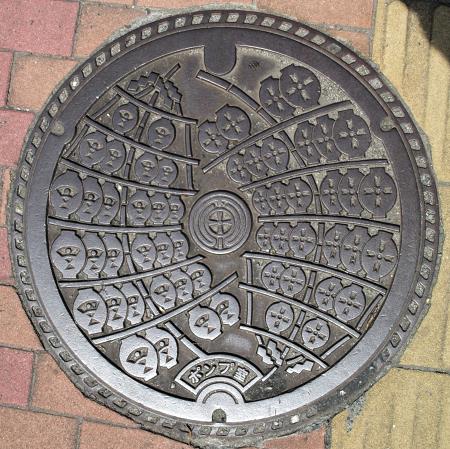 These racks of lanterns feature prominently in Akita City's largest festival, Kanto Matsuri. The manhole cover is in the city's downtown area. 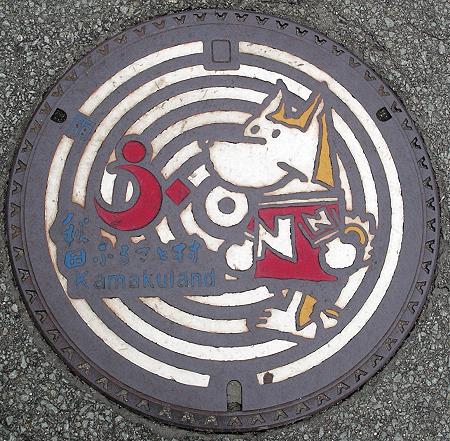 Kamakurando, a tourist destination in Yokote City, has its own manhole cover design. The dog is Kamakurando's mascot, Nobu. Of course, he's an Akita dog. 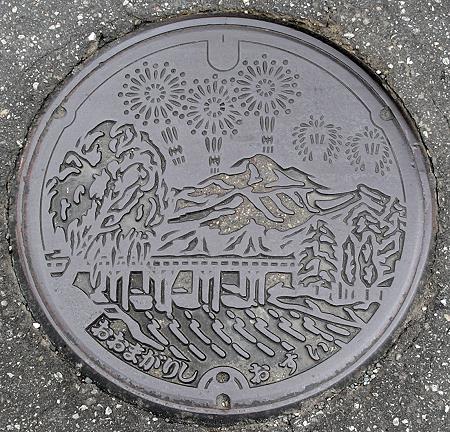 Omagari is a city famous for fireworks, and the site of Japan's largest fireworks competition. Here are some more manhole covers from Iwate.
First up, Rikuzentakata, a small city on the Pacific coast. I'm not sure what all the designs represent, but the lumpy things around the outside might be sea pineapples (a delicacy of Iwate that most people in Japan wouldn't consider food). 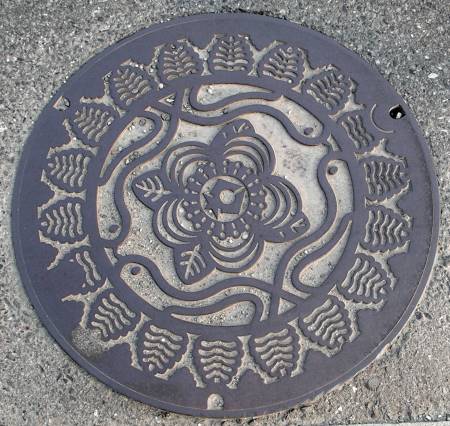 Next up, Esashi. Esashi has a famous district of old warehouses. 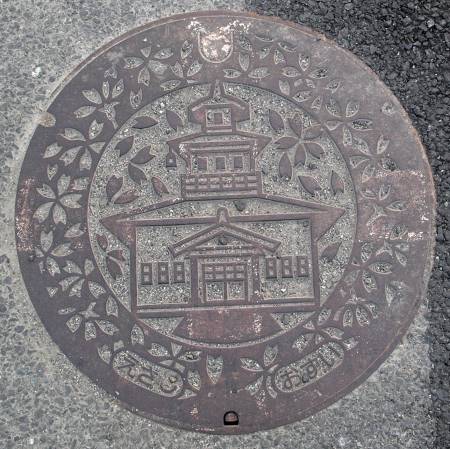 Finally, Ezuriko, a village that became part of Kitakami City in 1991.  It's not really a manhole cover, but Sendai also has decorative access panels for their underground utilities.
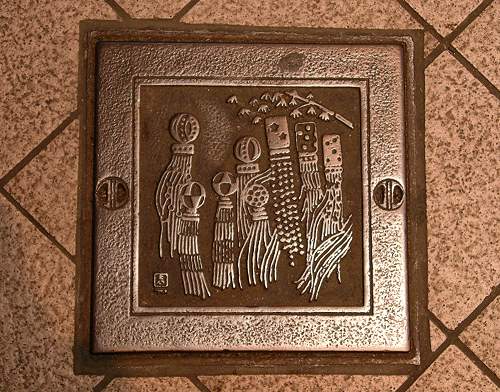 Here's another manhole cover, this time from Yuzawa. You can see Inukko Matsuri represented by the dog and shrine in the lower right corner.
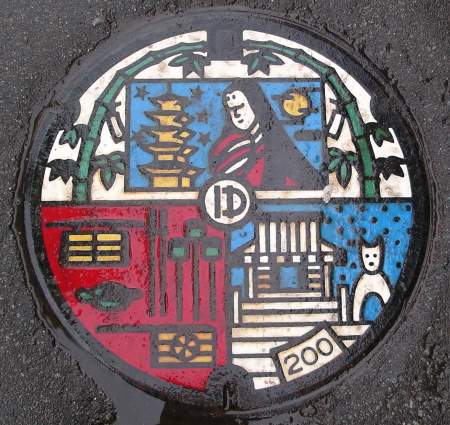 In America, manhole covers are a largely ignored part of the urban landscape. They are quite plain, bearing little more than a note of what utility it serves and a tread pattern so that pedestrians won't slip.
In Japan, though, each municipality has manhole cover designs that reflect local specialties, historical sites, or festivals. Whatever a town is famous for may end up on the manhole covers. Here's one of Kitakami's designs: 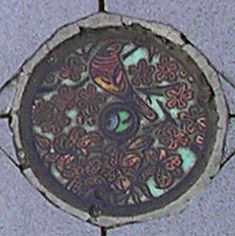 And one from Hottoyuda, famous for its hot springs: 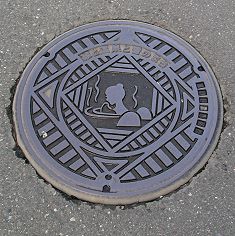 And one from Yokote, depicting Yokote Castle, a kamakura (snow hut), and cherry blossoms: 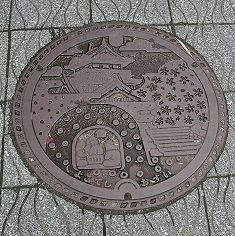 Back |